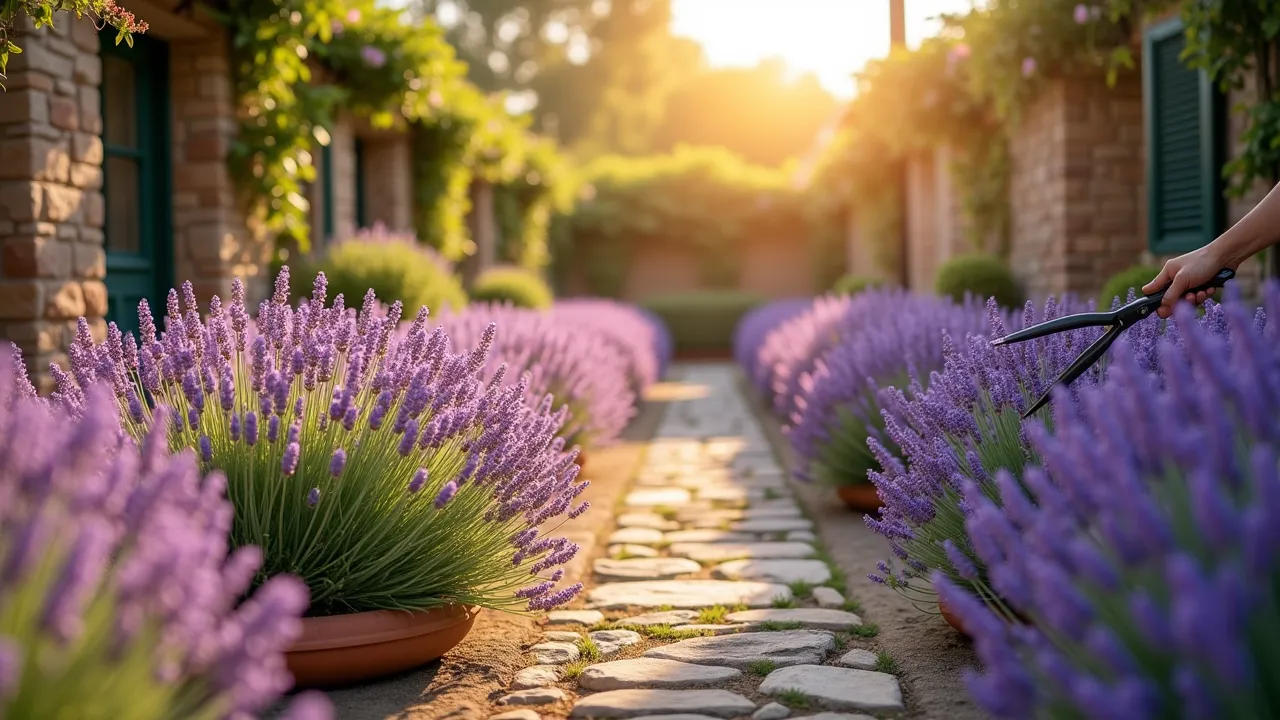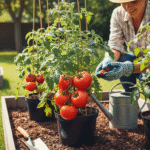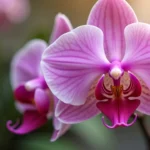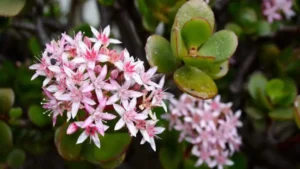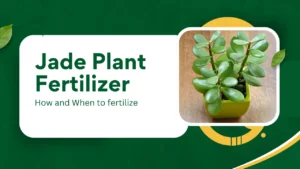Few plants bring such a calming presence to a garden as the lavender plant. With its silvery-green foliage, delicate purple blooms, and soothing fragrance, lavender has earned a beloved spot in gardens worldwide. Whether you’re growing it for its ornamental charm, essential oils, or simply to fill your home with its relaxing scent, this plant rewards you generously when cared for correctly.
As someone who has spent over two decades nurturing lavender across all types of gardens—from dry, rocky soils to container patios—I can tell you that growing lavender is as therapeutic as it is beautiful. However, this sun-loving herb demands the right balance of light, water, and soil conditions to truly thrive.
In this guide, I’ll share my proven lavender care tips, including how to water, prune, and keep your lavender healthy all year round. Whether you’re a beginner gardener or an experienced green thumb, by the end of this post, you’ll know exactly how to care for lavender plant the right way.
Table of Contents
Lavender Plant Overview
Lavender (Lavandula) belongs to the mint family, Lamiaceae, and is native to the Mediterranean region. Its iconic purple flowers and distinct aroma make it one of the most recognized and versatile herbs in the world.
Beyond its visual appeal, lavender has been cherished for centuries for its therapeutic and medicinal benefits. The essential oils extracted from its flowers are widely used in aromatherapy, skincare, and natural healing.
Today, there are over 45 species and more than 400 varieties of lavender—ranging from the English lavender (Lavandula angustifolia) known for its fragrance, to the French and Spanish varieties favored for their bold blooms and resilience in warm climates.
In home gardens, lavender offers more than just beauty—it invites pollinators like bees and butterflies, adds a touch of elegance to borders, and even repels mosquitoes naturally.
Lavender Plant Quick Care – Table Format
| Feature | Details |
|---|---|
| Scientific Name | Lavandula angustifolia |
| Common Name | Lavender |
| Native Region | Mediterranean |
| Light Requirements | Full Sun (6–8 hours daily) |
| Watering Needs | Low to Moderate; allow soil to dry between waterings |
| Propagation | Stem cuttings or seeds |
| Toxicity | Non-toxic to humans; mildly toxic to pets if ingested |
| Growth Rate | Moderate |
| Ideal Temperature | 60–80°F (15–27°C) |
Lavender Plant Requirements – Table Format
| Feature | Details |
|---|---|
| Hardiness | USDA Zones 5–9 (varies by species) |
| Climate Zones | Warm, dry, and sunny regions |
| Plant Type | Perennial herb |
| Plant Family | Lamiaceae |
| Plant Genus | Lavandula |
| Season of Interest | Late spring to early summer |
| Height | 1–3 feet |
| Spread | 1–4 feet |
| Spacing | 12–18 inches apart |
| Depth | Plant crown slightly above soil level |
| Maintenance | Low to Moderate |
| Soil Type | Sandy or loamy, well-draining soil |
| Soil pH | Neutral to slightly alkaline (6.5–7.5) |
| Soil Drainage | Excellent drainage essential |
How to Care for Lavender Plant
Let’s dive into the most important section—how to care for lavender plant like a professional gardener.
🌞 Lavender Plant Light Requirements
Lavender loves the sun. To produce abundant blooms and strong fragrance, ensure your lavender gets at least 6–8 hours of direct sunlight daily. If you’re growing lavender indoors, place it near a south-facing window or under a grow light.
Pro Gardener Tip:
If your lavender looks leggy or lacks flowers, it’s likely craving more sunlight. Move it to a brighter spot immediately.
💧 Lavender Plant Watering
Lavender’s Mediterranean roots mean it’s naturally drought-tolerant. Overwatering is one of the most common mistakes new gardeners make. Water only when the top 2 inches of soil are completely dry.
In pots, this usually means watering every 7–10 days in summer and much less during cooler months. Always ensure excess water drains freely from the bottom of the pot.
Pro Gardener Tip:
Stick your finger into the soil up to the first knuckle. If it feels moist, wait a day or two before watering again.
🌱 Lavender Plant Soil
Lavender thrives in light, well-draining soil. A mix of 60% garden soil, 30% coarse sand, and 10% compost works beautifully. Avoid heavy clay soil, as it holds too much moisture and leads to root rot.
Pro Gardener Tip:
Add a small handful of crushed eggshells or garden lime while planting to maintain the slightly alkaline pH lavender loves.
Best Pot for Lavender Plant
If you’re growing lavender in containers, choose a terracotta or clay pot with excellent drainage holes. These materials help wick away excess moisture, mimicking the dry conditions lavender enjoys.
Ensure the pot is at least 12–14 inches wide, allowing the roots to spread comfortably.
🔄 Repotting Lavender Plant
Lavender doesn’t like frequent root disturbance, so repot only every 2–3 years or when roots start circling the pot’s base. Choose a slightly larger pot each time and refresh the soil mix completely.
Pro Gardener Tip:
Repot during early spring before new growth begins for the least stress on the plant.
🌡️ Lavender Plant Temperature
Ideal growing temperatures range between 60–80°F (15–27°C). Lavender tolerates mild frost but struggles in extreme cold or humid conditions. If you live in a colder region, bring potted lavender indoors during winter.
💦 Lavender Plant Humidity Requirement
Lavender prefers dry air and struggles in high humidity. Good air circulation is vital, especially indoors. Avoid crowding multiple plants together, and never mist lavender leaves directly.
✂️ Lavender Plant Pruning
Pruning is the secret to keeping your lavender bushy, beautiful, and long-lived. After the blooming season (late summer), cut back one-third of the plant’s height, but never into old wood.
This encourages fresh growth and prevents the plant from becoming woody.
Pro Gardener Tip:
Prune your lavender right after flowering to encourage fuller growth next season and maintain that neat mound shape.
🌸 Lavender Plant Fertilizer
Lavender doesn’t demand much feeding. In fact, too much fertilizer can reduce its fragrance and make it grow leggy. Use a light, balanced organic fertilizer (5-5-5) once in spring when new growth starts.
Alternatively, mix a little compost into the topsoil once a year for natural nourishment.
🐛 Lavender Plant Pests and Diseases
Lavender is naturally pest-resistant, but a few issues can still arise—especially in damp conditions. Watch out for:
- Root rot (caused by poor drainage)
- Aphids (common on tender shoots)
- Spittlebugs (white foam on stems)
Combat pests with a gentle neem oil spray and improve airflow around the plant.
Pro Gardener Tip:
Avoid overhead watering—it invites fungal problems. Always water at the base of the plant.
Conclusion
Caring for lavender is more than just gardening—it’s an experience that soothes the senses and connects you to nature’s rhythm. Once you understand what lavender truly loves—sun, space, and dry soil—it rewards you with years of fragrant blooms and peaceful beauty.
Whether you’re growing lavender indoors on a sunny windowsill or outdoors in your garden borders, remember: less is often more with this resilient plant.
So, roll up your sleeves, breathe in that calming aroma, and let your lavender thrive. The secret of how to care for lavender plant isn’t complicated—it’s about observation, patience, and a bit of love from your gardener’s heart. 🌿💜

